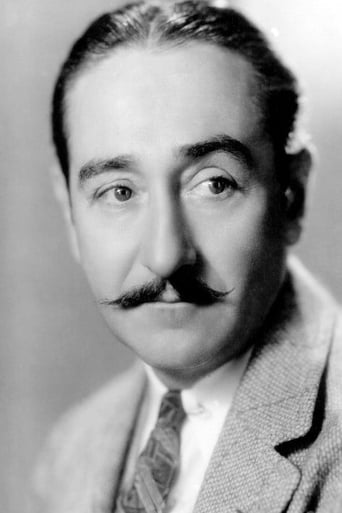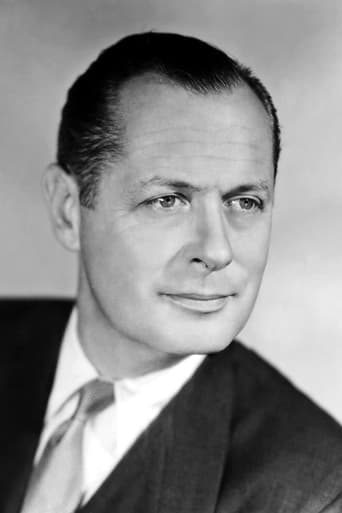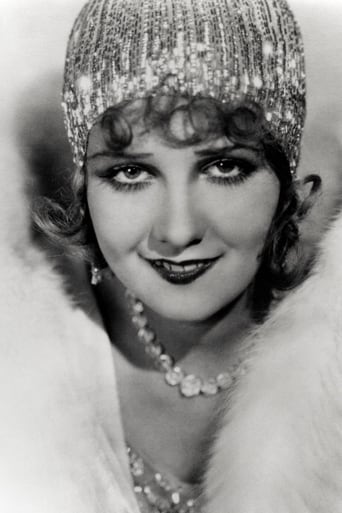Grimerlana
Plenty to Like, Plenty to Dislike
CommentsXp
Best movie ever!
Baseshment
I like movies that are aware of what they are selling... without [any] greater aspirations than to make people laugh and that's it.
kidboots
Hard to believe, Constance Bennett, now only know to old film fans, was once, for a little while, not only the most popular actress in America but billed as the highest paid actress in the world!!! Constance was considered the epitome of chic, not quite as aristocratic as Norma Shearer or Ann Harding, but finding her own type as the poor shop girl, wooed by riches into a degrading lifestyle, but by the end of the movie finding strength to stand up for the decent things in life. In other words the "sin movie", which peaked in popularity in the early thirties. Having an abrasively honest personality didn't help her popularity and the depression weary public began to tire of her public extravagance (apparently in 1931 she spent $250,000 on a new wardrobe while most of the country battled the depression.) Nowadays "The Easiest Way" is remembered for being Clark Gable's first MGM feature but, in 1931, it was then one of the many popular Constance Bennett movies being rushed into the cinemas.Laura Murdock (Constance Bennett) longs to escape the poverty of tenement life. Her father is off work indefinitely, her mother (Clara Blandick) is a drudge and her sister Peg (Anita Page) is all set to marry self righteous Nick (Clark Gable) who operates a family laundry business, but Laura wants more. She works at the tie counter at the local department store but is whisked into the world of modeling and advertising by a talent scout. Enter the movie's villain - advertising executive, Will Brockton (Adolphe Menjou) who takes Laura under his wing. Laura takes to luxury like a duck to water but the only family member who is on her side is her free loading father (J. Farrell MacDonald), who is always coming to her for handouts!! Nick is not happy and tells her exactly what he thinks of her, the new dress she has given to Peg and the fancy car she rides around in.Posing as Brockton's secretary, Laura goes to the mountains and meets reporter Jack Madison (Robert Mongomery). They fall in love and while Jack knows all about her relationship with Brockton, he makes her promise to stop seeing him and return all his gifts. Jack goes to South America and Laura falls upon hard times - she is locked out of her apartment because she can't pay the rent and her mother dies because she has not been able to give her father the money for an operation. She goes to Brockton for a loan but ends up going back to him. Of course Jack comes back and Effie St. Clair (a just fantastic performance by Marjorie Rambeau) tells her to grab her happiness while she can. She was an elderly mistress who has been left destitute when her "sugar daddy" dies. Laura tries to - by lying about her circumstances but Jack sees through it and the film ends on Christmas Eve with Laura being taken in by Peg and a penitent Nick, and hoping that Jack will forgive her in the near future.It was hard to feel a lot of sympathy for Laura. There was not a lot of emotion in Constance Bennett's performance. I was expecting a showdown at the end but she was happy to try to sneak out with Jack and avoid a confrontation with Brockton, who with a few subtle clues ("you'll find my handerchiefs in the top draw") was able to fill Jack in. Whatever happened to Anita Page? She may have portrayed Clark Gable's first on screen love interest but it was pretty thankless, being very much a supporting part and not very glamorous. Considering she was so memorable in "Our Blushing Brides" only the year before - what happened??Highly Recommended.
Neil Doyle
Pre-code films are always fun to watch although they do seem primitive by today's standards. But as a measure of what Hollywood was able to do despite film censorship that had to downplay the more censorable aspects of the original story, this is pretty risqué for its time.Bennett, of course, was the Joan Crawford of her era, always playing a put upon heroine in sob stories that never had too much credibility. Here she pines for Robert Montgomery (singularly lacking in the big romantic star department, even then), while her disapproving brother-in-law (Clark Gable in an early role), frowns on her unorthodox behavior as a kept woman (Adolphe Menjou is the rich sugar daddy).Enjoyable only as a relic. Bennett does a passable job, no more, her false eyelashes and peroxide blonde hair making her look a little harsh under those kleig lights. But the most natural performance, as well as the most charisma, is clearly Clark Gable's. He comes across as a handsome newcomer who steals a scene by his mere presence. He has the final Christmas scene with Bennett, and it's a touching one.He would later become the big romantic male star that Robert Montgomery failed to develop into.
Poseidon-3
The shopgirl-turned-clotheshorse concept was a staple of 1920's a 30's films, with Joan Crawford wringing quite a bit of success out of the formula. Here, Bennett gives it a go in a story that was based on a 1909 stage play. She portrays the eldest of five children living with their parents in a squalid, cramped New York tenement. The father resists working while the mother barely manages to wrangle the kids and put supper on the table. Bennett toils behind the tie counter at a department store until one day she gets the opportunity to pose as a model for advertising artists. She doesn't stop with this modest success and proceeds to hook up with the boss (Menjou), who fixes her up with a fancy apartment and all the jewels and furs she can handle. During this, she aids her family as well, though a few of them reject her for the way she earns her keep. On an extended visit to Colorado, she happens upon handsome young writer Montgomery and quickly falls for him. She decides to give up her lavish "kept" lifestyle and return to work while he is away on assignment, knowing he will be back for her to marry him. But can she take that step backwards? Bennett, one of the highest paid and most popular stars of the era presents an appealing and attractive persona (check out that waist!) She knows that what she's doing is "wrong", yet circumstances seem to prevent her from doing otherwise unless she wants to exist in poverty. Menjou is assured and manipulative in his role. Montgomery is quite fresh and likable for the better part of his screen time. Page appears to great advantage as Bennett's far earthier sister who winds up wed to Gable in one of his very earliest roles. He's handsome though his character is a little self-righteous. Rambeau makes an impression as one of Bennett's sidekicks in the modeling biz who also reaches for the top in the mistress game. Virtually all of the cast members give vivid performances. The opening sequences in the rundown apartment are quite fascinating in their snappy dialogue and depiction of the hard times. Today's audiences will be able to see through the predictable plotting, but the film still holds interest. Though the Hays Office is sometimes blamed for tampering with the material, the 1917 silent version had at least as downbeat an ending as this one does. In fact, if the story were to end any other way than it does, there'd be very little point to it all!
Single-Black-Male
Having returned to cinema after a five year absence, Gable began to draw attention to himself on the screen with the aid of talking films like this one. Silent features did nothing for him as an actor, but hearing him speak provided him with regular work.




